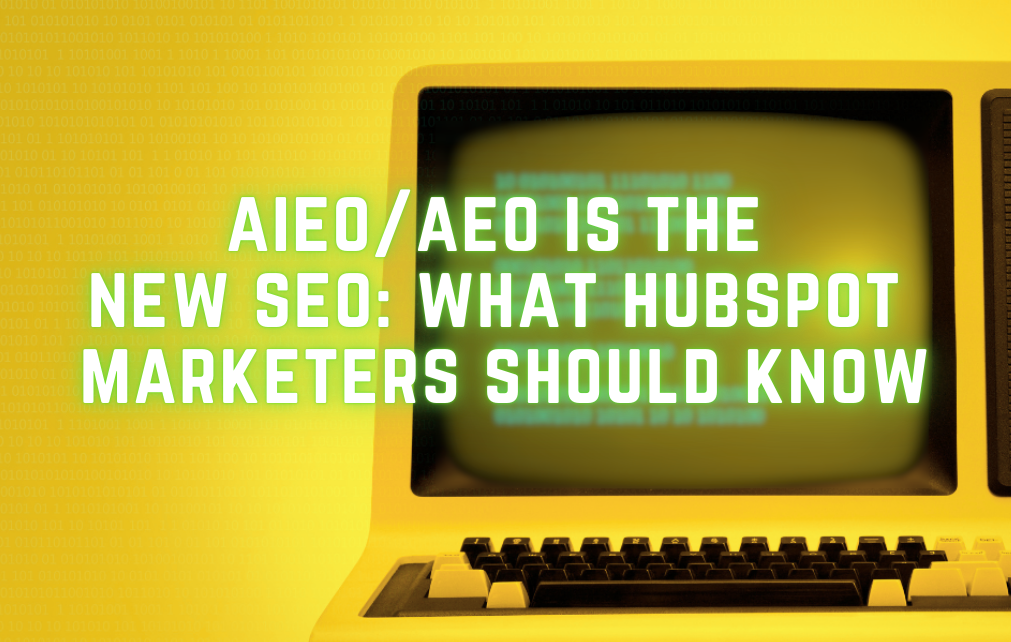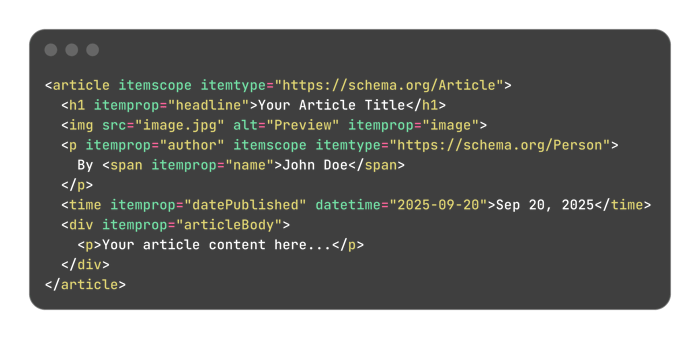4 min read
AIEO/AEO is the new SEO: what hubspot marketers should know
![]() Guest Blogger & FreshJuice Founder/Software Engineer, Alex Zappa
:
October 07, 2025
Guest Blogger & FreshJuice Founder/Software Engineer, Alex Zappa
:
October 07, 2025

[Written by Guest Blogger & FreshJuice Founder/Software Engineer Alex Zappa]
As you know, search has changed. For decades, the game was making Google happy with keywords, backlinks, and schema markup to win rich snippets.
But now, users frustrated with endless ads and cluttered SERPs are shifting to AI-powered answers from ChatGPT, Gemini, and the like. And with that shift, a new discipline has emerged we must learn: AIEO (Artificial Intelligence Engine Optimization), aka AEO, GEO, etc.
Here's how AIEO differs from classic SEO, and where HubSpot stands currently with AI-driven search.
First, the Key Differences
On the surface, AIEO may appear to be an “SEO rebrand.” After all, they both rely on structured data, clean markup, and backlinks. The key distinction however is that:
- SEO optimizes for ranking in search engine results pages (SERPs).
- AIEO optimizes for direct answers, citations, and source credibility inside AI-driven tools.
When AI platforms answer questions, they don't just reveal ten blue links; they summarize, reason, and attach citations. The goal of AIEO is to make sure your site appears in those citations.
Same Old Logic, New Layer of Intelligence
Behind the curtain, AI search engines still “parse” content much like Google always has. The mechanics haven’t disappeared. Crawlers still scan your pages, structured data still matters, and backlinks still count.
The big difference?
AI systems go deeper. They:
- Understand context (not just keywords).
- Connect dots between multiple sources.
- Provide reasoned answers instead of raw links.
Still, these engines aren’t as “smart” as people think. Like children learning to read, they need hints. You must explicitly tell them:
- This is an FAQ section.
- This is our company’s address.
- This is a technical article, not a generic blog post.
This is where good old-fashioned SEO schema markup becomes highly relevant again.
Structured Data for AI Search
Google has recommended JSON-LD (a specific format that implements schema markup) for more than a decade to ensure you create a structured snapshot of your content. But now, you need both JSON-LD and inline microdata.
Why?
Because AI search engines read content differently:
- Gemini and ChatGPT → can parse JSON-LD and the content in the page body.
- Perplexity (and similar AI engines) → currently ignore JSON-LD but reliably parse microdata inline in your HTML content.
Best practice in 2025:
Use inline microdata whenever possible—it remains the most reliable and crawl-friendly option for AI and search engines alike.
If your site is a dynamic application where content is rendered or loaded asynchronously, then you can rely on JSON-LD as a fallback to ensure structured data is still discoverable.
Here are some examples:
- For Articles (microdata inside <article>):

- For FAQ pages (microdata inside <section>):
- For BreadcrumbList (microdata inside <nav>):
HubSpot in 2025: Schema Still in Beta
As of September 2025, HubSpot’s built-in Schema Markup for blogs is still in beta (launched Sep-2022). It’s functional but limited.
If you want serious AIEO results, my recommendation is:
- Use a custom solution for schema.
- Or work with specialists who can implement tailored schema markup for each content type (articles, products, events, job postings, etc.).
I encourage you to check out the foundations of HubSpot structured data through my post: How to Use Structured Data (Schema Markup) in HubSpot to Improve SEO. The flexibility outlined ensures your content speaks the same language as both Google and AI crawlers.


So How Do You Become a Trusted AI Source?
The short answer is: SEO fundamentals still apply, including:
- Creating high-quality content – useful, well-structured, easy to summarize.
- Providing structured hints – schema that tells crawlers exactly what’s on the page.
- Earning backlinks and external signals – other sites, blogs, or even Reddit users citing your data.
Let's walk through an example:
Imagine your company sells fresh juice, which you detail the benefits of on your website. Your next steps should be to:
- Get a health blogger to cite your research,
- Have a nutrition forum discuss your juice,
- And circulate a press release about your brand,
AI engines will now recognize your site as the primary source of truth, and, the next time someone asks ChatGPT, “Is fresh juice good for you?”, there is a much better chance it will highlight your company’s site as an authoritative reference.
How Modern Companies Build Trust at Scale
These tips aren't just theory. Look at how some leading companies are incorporating the approach:
- HubSpot acquired The Hustle and turned it into a media platform, massively increasing backlinks, authority, and brand presence in AI answers.
- Kandji launched The Sequence, a standalone content hub designed to attract backlinks and strengthen the brand’s positioning in search and AI citations.
- Stripe created Increment (now archived but influential), a dedicated online magazine that built Stripe’s reputation as a thought leader in software and engineering.
- First Round Capital publishes First Round Review, which is frequently cited as a top startup knowledge resource; a classic example of content marketing evolving into an authority site.
The common thread: companies are no longer just writing product blog posts. They’re building media properties that create organic backlinks, trusted references, and long-lasting authority, all of which AI engines lean on when selecting citation sources.
SEO Vs. AIEO: Evolution, Not Replacement
So, does AIEO kill SEO?
Not really.
SEO is evolving, not dying.
- The old SEO mindset: polish keywords, keep social media alive, and maybe build a few backlinks if you have time.
- The new AIEO mindset:
- Create real, valuable content (skip the fluff).
- Support it with structured data.
- Earn backlinks and social validation to prove you’re a trusted source.
You now need to regularly communicate with AI engines by shaping your content so that AI crawlers and models can:
- Parse it easily through semantic HTML and microdata.
- Trust it because your JSON-LD and on-page content align.
- Summarize it quickly thanks to clear writing and FAQ sections.
- Validate it through external backlinks and citations.
SEO got us rankings, but AIEO gets us citations inside AI answers. That’s the evolution.
In short: Produce genuinely valuable content, support it with schema, and let the AI engines know exactly what you’re about.
May the 4th be with you,
Alex
Guest Author Bio:
 Alex is a fresh-minded, problem-solver, and builder, passionate about turning complex challenges into clean, elegant solutions. With a love for technology, software development, and high-performance web experiences, he brings both creativity and precision to every project. Outside of coding, Alex can often be found exploring food culture, capturing moments through photography, or chasing inspiration while traveling.
Alex is a fresh-minded, problem-solver, and builder, passionate about turning complex challenges into clean, elegant solutions. With a love for technology, software development, and high-performance web experiences, he brings both creativity and precision to every project. Outside of coding, Alex can often be found exploring food culture, capturing moments through photography, or chasing inspiration while traveling.


